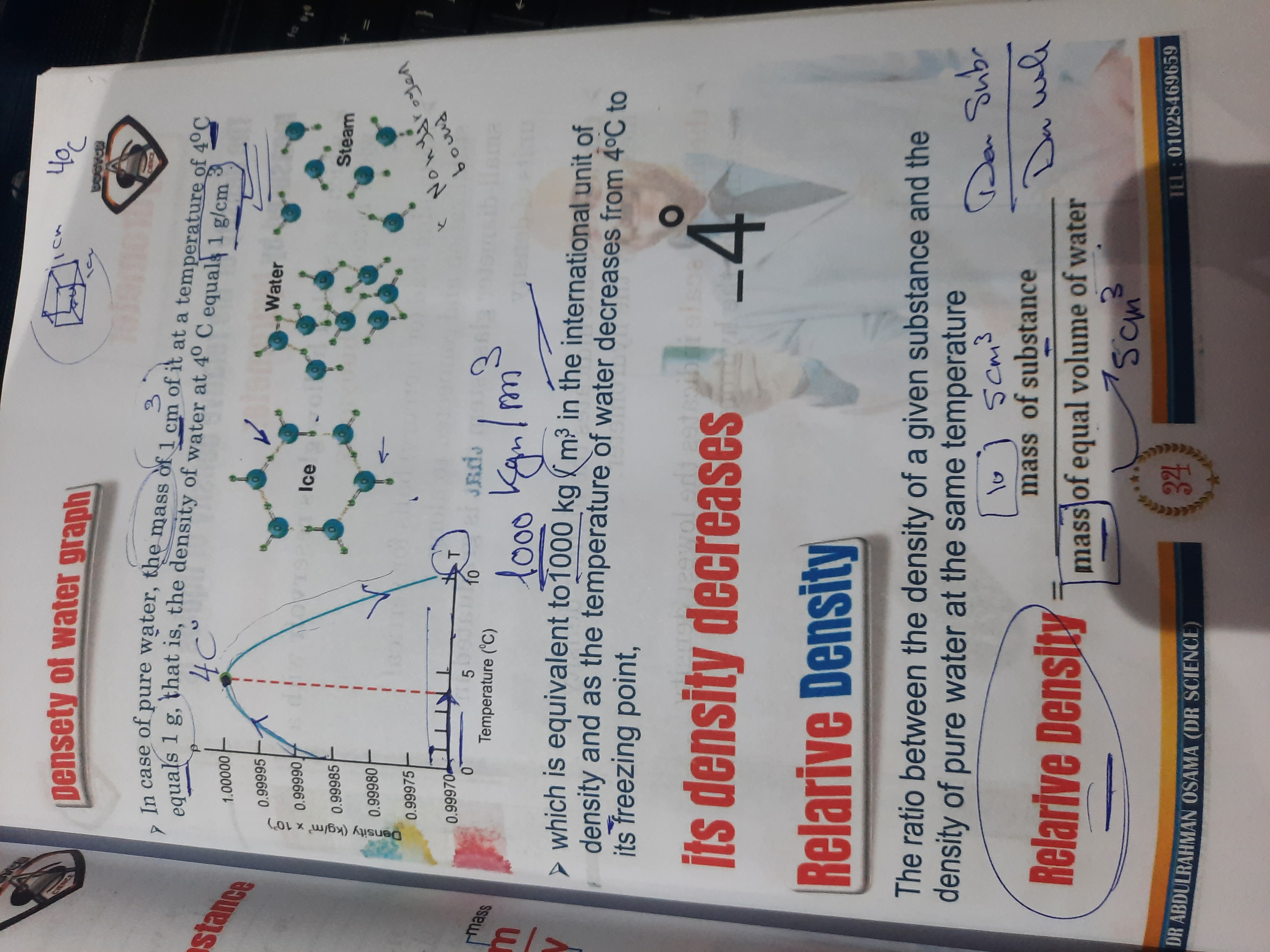What is the relationship between the density of water and temperature, specifically at 4°C and its freezing point?

Understand the Problem
The question involves understanding the concept of density and relative density of water as it changes with temperature, as well as interpreting a graph related to these properties. The focus is on how the density of water varies from 4°C to its freezing point and how to calculate relative density compared to water.
Answer
Water is densest at 4°C, decreases in density as it cools to 0°C when ice forms.
The density of water is highest at 4°C due to maximum hydrogen bonding. Below 4°C, density decreases as water approaches 0°C, when ice crystals form, causing expansion and further decrease in density.
Answer for screen readers
The density of water is highest at 4°C due to maximum hydrogen bonding. Below 4°C, density decreases as water approaches 0°C, when ice crystals form, causing expansion and further decrease in density.
More Information
At 4°C, water achieves maximum density because hydrogen bonds are optimally spaced. As temperature decreases further, water expands when freezing due to the crystal structure of ice, which is less dense than liquid water.
Tips
Misunderstanding the behavior of water near freezing points can lead to incorrect assumptions about density relationships.
Sources
- Why does the density of water decrease after 4°C? - Quora - quora.com
- Water density - Science Learning Hub - sciencelearn.org.nz
AI-generated content may contain errors. Please verify critical information